1. Johns Hopkins University & Medicine. Coronavirus Resource Center [Internet]. Baltimore (MD): Johns Hopkins University & Medicine;2022. cited 2022 January 27. Available from:
https://coronavirus.jhu.edu/.
2. Coulthard H, Sharps M, Cunliffe L, van den Tol A. Eating in the lockdown during the COVID 19 pandemic; self-reported changes in eating behaviour, and associations with BMI, eating style, coping and health anxiety. Appetite. 2021; 161:105082. PMID:
33476651.

3. Abbas AM, Kamel MM. Dietary habits in adults during quarantine in the context of COVID-19 pandemic. Obes Med. 2020; 19:100254. PMID:
32427142.
4. Di Renzo L, Gualtieri P, Pivari F, Soldati L, Attinà A, Cinelli G, Leggeri C, Caparello G, Barrea L, Scerbo F, et al. Eating habits and lifestyle changes during COVID-19 lockdown: an Italian survey. J Transl Med. 2020; 18:229. PMID:
32513197.

5. Ministry of Health and Welfare (KR). Coronavirus (COVID-19), Republic of Korea [Internet]. Sejong: Ministry of Health and Welfare;2022. cited 2022 January 27. Available from:
http://ncov.mohw.go.kr/en/.
6. Ingram J, Maciejewski G, Hand CJ. Changes in diet, sleep, and physical activity are associated with differences in negative mood during COVID-19 lockdown. Front Psychol. 2020; 11:588604. PMID:
32982903.

7. Sidor A, Rzymski P. Dietary choices and habits during COVID-19 lockdown: experience from Poland. Nutrients. 2020; 12:1657. PMID:
32503173.
8. Pérez-Rodrigo C, Gianzo Citores M, Hervás Bárbara G, Ruiz-Litago F, Casis Sáenz L, Arija V, López-Sobaler AM, Martínez de Victoria E, Ortega RM, Partearroyo T, et al. Patterns of change in dietary habits and physical activity during lockdown in Spain due to the COVID-19 pandemic. Nutrients. 2021; 13:300. PMID:
33494314.

9. Ammar A, Brach M, Trabelsi K, Chtourou H, Boukhris O, Masmoudi L, Bouaziz B, Bentlage E, How D, Ahmed M, et al. Effects of COVID-19 home confinement on eating behaviour and physical activity: results of the ECLB-COVID19 international online survey. Nutrients. 2020; 12:1583. PMID:
32481594.
10. Carroll N, Sadowski A, Laila A, Hruska V, Nixon M, Ma DW, Haines J. The Guelph Family Health Study. The impact of COVID-19 on health behavior, stress, financial and food security among middle to high income Canadian families with young children. Nutrients. 2020; 12:2352. PMID:
32784530.

11. Papandreou C, Arija V, Aretouli E, Tsilidis KK, Bulló M. Comparing eating behaviours, and symptoms of depression and anxiety between Spain and Greece during the COVID-19 outbreak: cross-sectional analysis of two different confinement strategies. Eur Eat Disord Rev. 2020; 28:836–846. PMID:
32754986.

12. Poelman MP, Gillebaart M, Schlinkert C, Dijkstra SC, Derksen E, Mensink F, Hermans RC, Aardening P, de Ridder D, de Vet E. Eating behavior and food purchases during the COVID-19 lockdown: a cross-sectional study among adults in the Netherlands. Appetite. 2021; 157:105002. PMID:
33068668.

13. Robinson E, Boyland E, Chisholm A, Harrold J, Maloney NG, Marty L, Mead BR, Noonan R, Hardman CA. Obesity, eating behavior and physical activity during COVID-19 lockdown: a study of UK adults. Appetite. 2021; 156:104853. PMID:
33038479.

14. Rodríguez-Pérez C, Molina-Montes E, Verardo V, Artacho R, García-Villanova B, Guerra-Hernández EJ, Ruíz-López MD. Changes in dietary behaviours during the COVID-19 outbreak confinement in the Spanish COVIDiet study. Nutrients. 2020; 12:1730. PMID:
32531892.

15. Korea Rural Economic Institute. Results From the 2020 Korean Food Purchase Behavior Survey. Naju: Korea Rural Economic Institute;2020.
16. Deschasaux-Tanguy M, Druesne-Pecollo N, Esseddik Y, de Edelenyi FS, Allès B, Andreeva VA, Baudry J, Charreire H, Deschamps V, Egnell M, et al. Diet and physical activity during the coronavirus disease 2019 (COVID-19) lockdown (March-May 2020): results from the French NutriNet-Santé cohort study. Am J Clin Nutr. 2021; 13:924–938.

17. Robinson E, Gillespie S, Jones A. Weight-related lifestyle behaviours and the COVID-19 crisis: An online survey study of UK adults during social lockdown. Obes Sci Pract. 2020; 6:735–740. PMID:
33354349.

18. Zachary Z, Brianna F, Brianna L, Garrett P, Jade W, Alyssa D, Mikayla K. Self-quarantine and weight gain related risk factors during the COVID-19 pandemic. Obes Res Clin Pract. 2020; 14:210–216. PMID:
32460966.
19. Sánchez-Sánchez E, Ramírez-Vargas G, Avellaneda-López Y, Orellana-Pecino JI, García-Marín E, Díaz-Jimenez J. Eating habits and physical activity of the Spanish population during the COVID-19 pandemic period. Nutrients. 2020; 12:2826. PMID:
32942695.
20. Górnicka M, Drywień ME, Zielinska MA, Hamułka J. Dietary and lifestyle changes during COVID-19 and the subsequent lockdowns among Polish adults: a cross-sectional online survey PLifeCOVID-19 study. Nutrients. 2020; 12:2324. PMID:
32756458.
21. Pfeifer D, Rešetar J, Gajdoš Kljusurić J, Panjkota Krbavčić I, Vranešić Bender D, Rodríguez-Pérez C, Ruíz-López MD, Šatalić Z. Cooking at home and adherence to the Mediterranean diet during the COVID-19 confinement: the experience from the Croatian COVIDiet study. Front Nutr. 2021; 8:617721. PMID:
33869262.

22. Wolfson JA, Leung CW. Food insecurity and COVID-19: disparities in early effects for US adults. Nutrients. 2020; 12:1648. PMID:
32498323.
23. Anderson G, Frank JW, Naylor CD, Wodchis W, Feng P. Using socioeconomics to counter health disparities arising from the COVID-19 pandemic. BMJ. 2020; 369:m2149. PMID:
32513666.

24. Seo MH, Lee WY, Kim SS, Kang JH, Kang JH, Kim KK, Kim BY, Kim YH, Kim WJ, Kim EM, et al. 2018 Korean Society for the Study of Obesity guideline for the management of obesity in Korea. J Obes Metab Syndr. 2019; 28:40–45. PMID:
31089578.
25. Rha JY, Lee B, Nam Y, Yoon J. COVID-19 and changes in Korean consumers’ dietary attitudes and behaviors. Nutr Res Pract. 2021; 15:S94–109. PMID:
34909136.
26. Kim MH, Yeon JY. Change of dietary habits and the use of home meal replacement and delivered foods due to COVID-19 among college students in Chungcheong province, Korea. J Nutr Health. 2021; 54:383–397.
27. Al-Domi H, Al-Dalaeen A, Al-Rosan S, Batarseh N, Nawaiseh H. Healthy nutritional behavior during COVID-19 lockdown: a cross-sectional study. Clin Nutr ESPEN. 2021; 42:132–137. PMID:
33745566.

28. Braden A, Musher-Eizenman D, Watford T, Emley E. Eating when depressed, anxious, bored, or happy: Are emotional eating types associated with unique psychological and physical health correlates? Appetite. 2018; 125:410–417. PMID:
29476800.
29. Gammone MA, D’Orazio N. Review: obesity and COVID-19: a detrimental intersection. Front Endocrinol (Lausanne). 2021; 12:652639. PMID:
33995281.
30. Martikainen P, Aromaa A, Heliövaara M, Klaukka T, Knekt P, Maatela J, Lahelma E. Reliability of perceived health by sex and age. Soc Sci Med. 1999; 48:1117–1122. PMID:
10390049.
31. Krakau I. Perception of health and use of health care services in a Swedish primary care district. A ten year’s perspective. Scand J Prim Health Care. 1991; 9:103–108. PMID:
1891654.
32. Kaplan GA, Goldberg DE, Everson SA, Cohen RD, Salonen R, Tuomilehto J, Salonen J. Perceived health status and morbidity and mortality: evidence from the Kuopio ischaemic heart disease risk factor study. Int J Epidemiol. 1996; 25:259–265. PMID:
9119550.
33. Reigal RE, Páez-Maldonado JA, Pastrana-Brincones JL, Morillo-Baro JP, Hernández-Mendo A, Morales-Sánchez V. Physical activity is related to mood states, anxiety state and self-rated health in COVID-19 lockdown. Sustainability. 2021; 13:5444.
34. Hamer M, Kivimäki M, Gale CR, Batty GD. Lifestyle risk factors, inflammatory mechanisms, and COVID-19 hospitalization: a community-based cohort study of 387,109 adults in UK. Brain Behav Immun. 2020; 87:184–187. PMID:
32454138.
35. Brawner CA, Ehrman JK, Bole S, Kerrigan DJ, Parikh SS, Lewis BK, Gindi RM, Keteyian C, Abdul-Nour K, Keteyian C. Inverse relationship of maximal exercise capacity to hospitalization secondary to coronavirus disease 2019. Mayo Clin Proc. 2021; 96:32–39. PMID:
33413833.
36. Cho DH, Lee SJ, Jae SY, Kim WJ, Ha SJ, Gwon JG, Choi J, Kim DW, Kim JY. Physical activity and the risk of COVID-19 infection and mortality: a nationwide population-based case-control study. J Clin Med. 2021; 10:1539. PMID:
33917558.
37. Nieman DC, Wentz LM. The compelling link between physical activity and the body’s defense system. J Sport Health Sci. 2019; 8:201–217. PMID:
31193280.
38. Popkin BM, Du S, Green WD, Beck MA, Algaith T, Herbst CH, Alsukait RF, Alluhidan M, Alazemi N, Shekar M. Individuals with obesity and COVID-19: A global perspective on the epidemiology and biological relationships. Obes Rev. 2020; 21:e13128. PMID:
32845580.
39. Ali Mohamed EM, Alhaj Abdallah SM, Ahmadi A, Lucero-Prisno DE 3rd. Food security and COVID-19 in Africa: implications and recommendations. Am J Trop Med Hyg. 2021; 104:1613–1615. PMID:
33684060.
40. Kent K, Murray S, Penrose B, Auckland S, Visentin D, Godrich S, Lester E. Prevalence and socio-demographic predictors of food insecurity in Australia during the COVID-19 pandemic. Nutrients. 2020; 12:2682. PMID:
32887422.
41. Niles MT, Bertmann F, Belarmino EH, Wentworth T, Biehl E, Neff R. The early food insecurity impacts of COVID-19. Nutrients. 2020; 12:2096. PMID:
32679788.
42. Bonaccio M, Costanzo S, Ruggiero E, Persichillo M, Esposito S, Olivieri M, Di Castelnuovo A, Cerletti C, Donati MB, de Gaetano G, et al. Changes in ultra-processed food consumption during the first Italian lockdown following the COVID-19 pandemic and major correlates: results from two population-based cohorts. Public Health Nutr. 2021; 24:3905–3915. PMID:
33663640.
43. Ruíz-Roso MB, de Carvalho Padilha P, Matilla-Escalante DC, Brun P, Ulloa N, Acevedo-Correa D, Arantes Ferreira Peres W, Martorell M, Rangel Bousquet Carrilho T, de Oliveira Cardoso L, et al. Changes of physical activity and ultra-processed food consumption in adolescents from different countries during COVID-19 pandemic: an observational study. Nutrients. 2020; 12:2289. PMID:
32751721.
44. Rauber F, Steele EM, Louzada ML, Millett C, Monteiro CA, Levy RB. Ultra-processed food consumption and indicators of obesity in the United Kingdom population (2008-2016). PLoS One. 2020; 15:e0232676. PMID:
32357191.
45. Machado PP, Steele EM, Levy RB, da Costa Louzada ML, Rangan A, Woods J, Gill T, Scrinis G, Monteiro CA. Ultra-processed food consumption and obesity in the Australian adult population. Nutr Diabetes. 2020; 10:39. PMID:
33279939.
46. Nardocci M, Polsky JY, Moubarac JC. Consumption of ultra-processed foods is associated with obesity, diabetes and hypertension in Canadian adults. Can J Public Health. 2021; 112:421–429. PMID:
33174128.
47. Adjibade M, Julia C, Allès B, Touvier M, Lemogne C, Srour B, Hercberg S, Galan P, Assmann KE, Kesse-Guyot E. Prospective association between ultra-processed food consumption and incident depressive symptoms in the French NutriNet-Santé cohort. BMC Med. 2019; 17:78. PMID:
30982472.
48. Gómez-Donoso C, Sánchez-Villegas A, Martínez-González MA, Gea A, Mendonça RD, Lahortiga-Ramos F, Bes-Rastrollo M. Ultra-processed food consumption and the incidence of depression in a Mediterranean cohort: the SUN Project. Eur J Nutr. 2020; 59:1093–1103. PMID:
31055621.
49. Li Y, Lv MR, Wei YJ, Sun L, Zhang JX, Zhang HG, Li B. Dietary patterns and depression risk: a meta-analysis. Psychiatry Res. 2017; 253:373–382. PMID:
28431261.
50. Cenit MC, Sanz Y, Codoñer-Franch P. Influence of gut microbiota on neuropsychiatric disorders. World J Gastroenterol. 2017; 23:5486–5498. PMID:
28852308.
51. Roca-Saavedra P, Mendez-Vilabrille V, Miranda JM, Nebot C, Cardelle-Cobas A, Franco CM, Cepeda A. Food additives, contaminants and other minor components: effects on human gut microbiota-a review. J Physiol Biochem. 2018; 74:69–83. PMID:
28488210.
52. Goldstein MS, Siegel JM, Boyer R. Predicting changes in perceived health status. Am J Public Health. 1984; 74:611–614. PMID:
6721021.
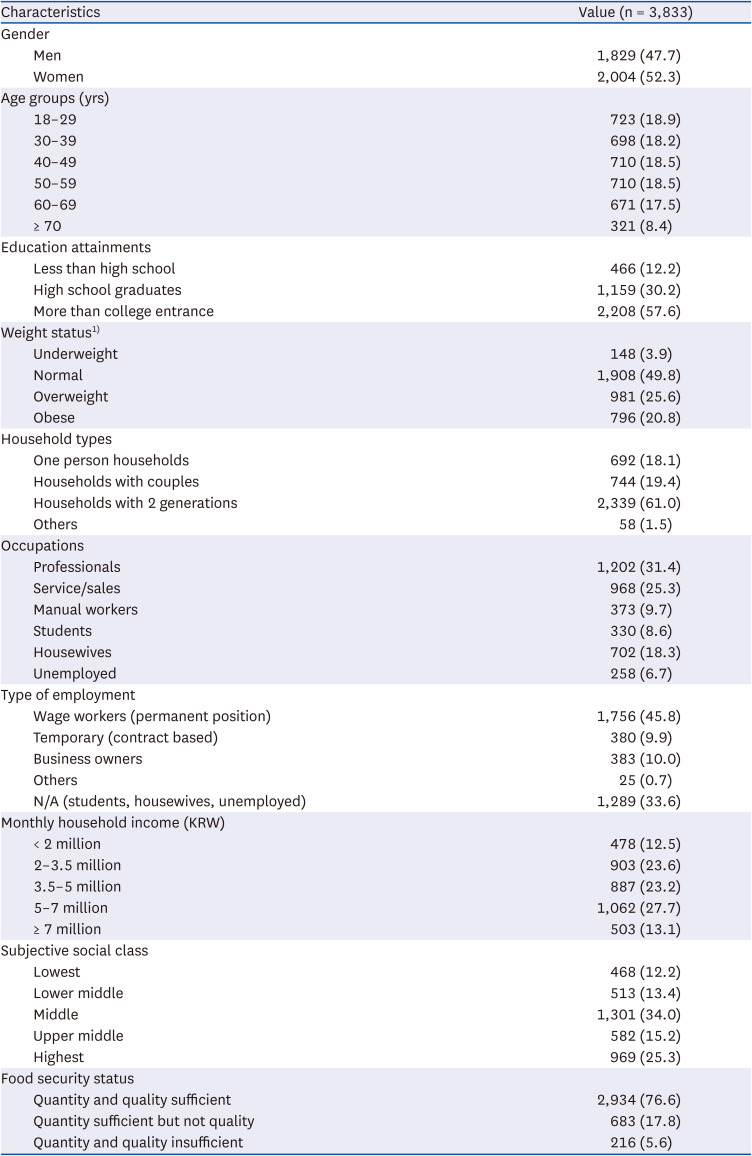
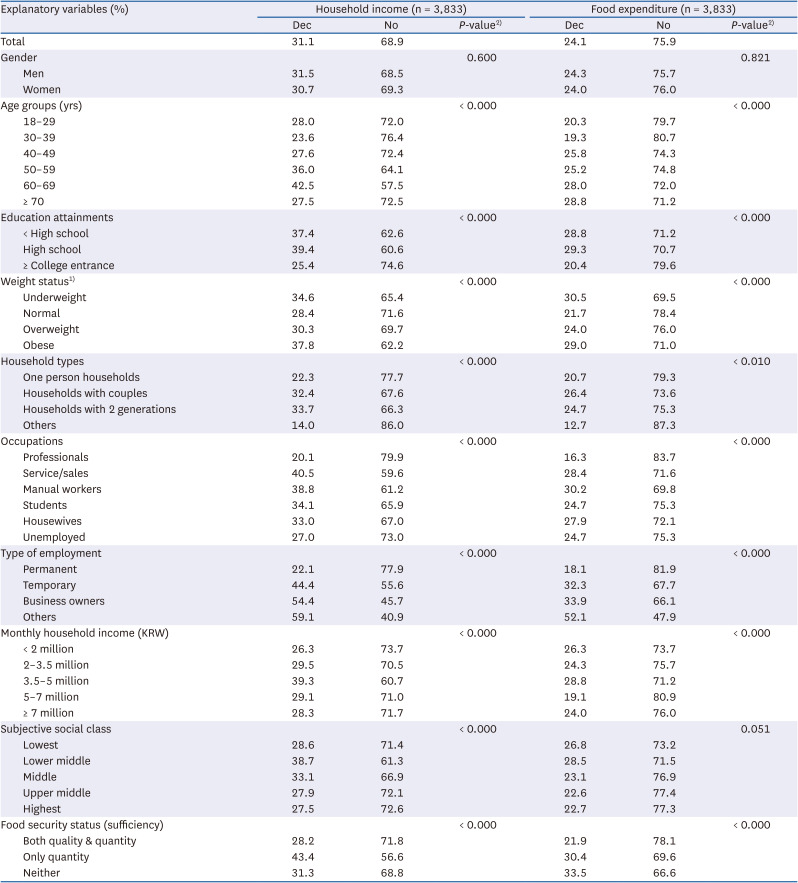
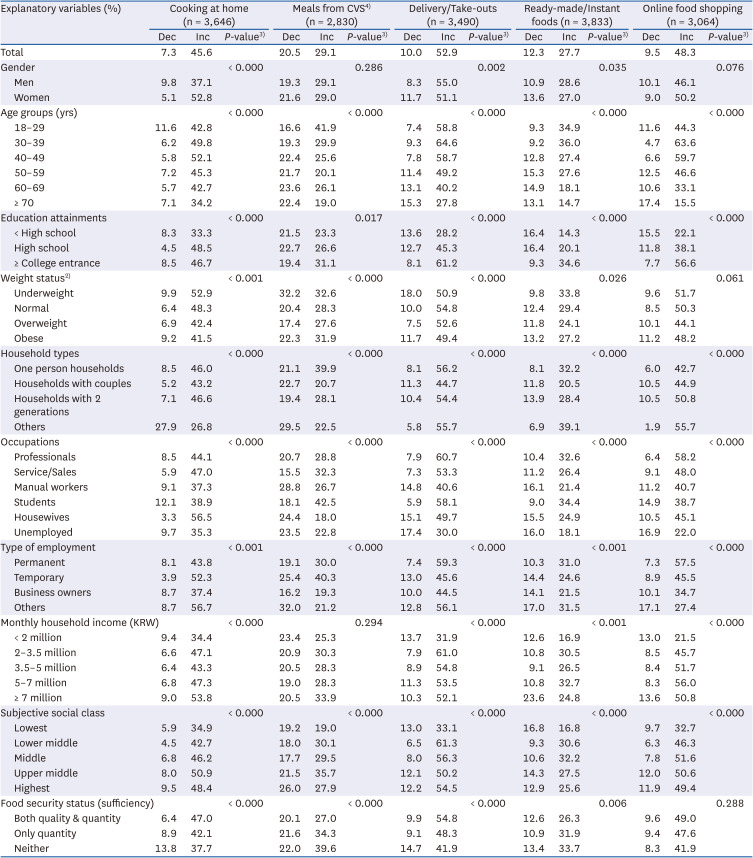
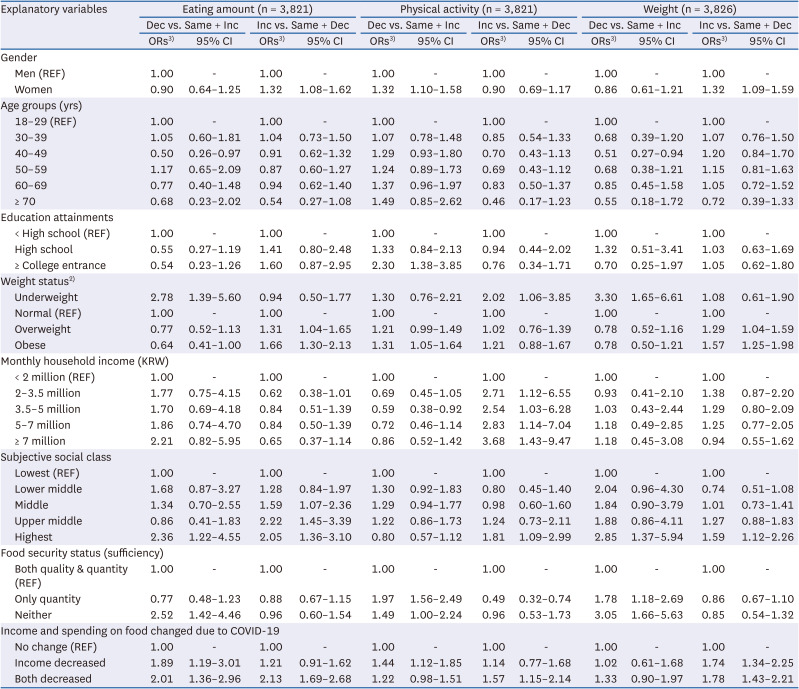
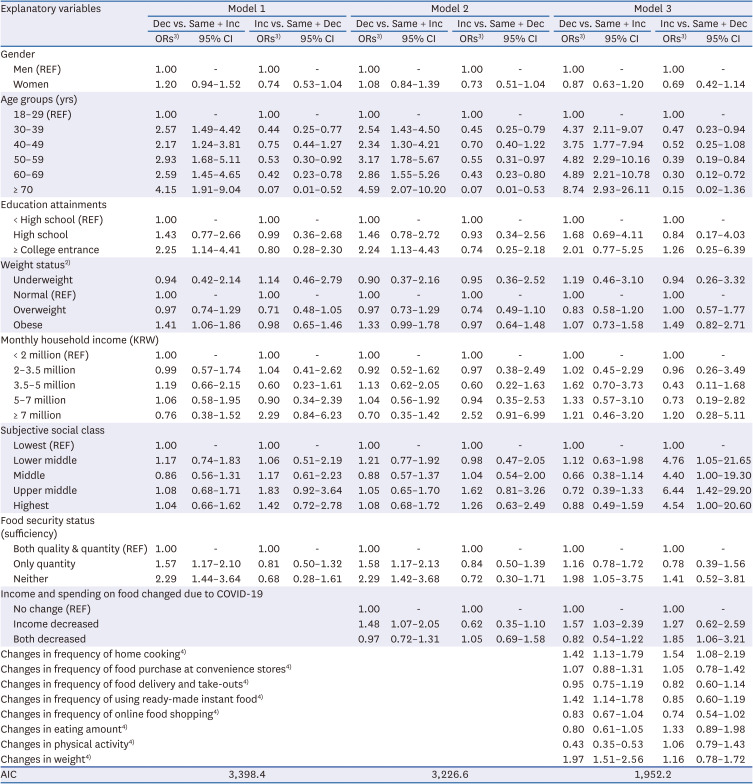




 PDF
PDF Citation
Citation Print
Print



 XML Download
XML Download